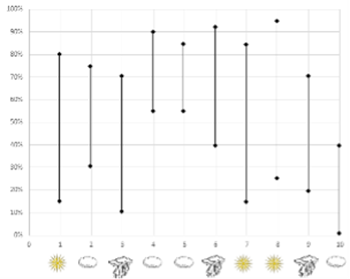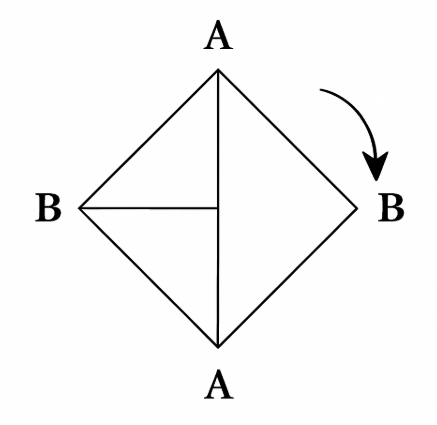Ready to dominate the TEAS Reading section?
Whether you're applying to nursing school for the first time or retaking to boost your score, our expertly designed practice questions and proven strategies will give you the confidence to succeed.
Why Use This Free TEAS Reading Practice Test?
- Mimics actual ATI TEAS 7 reading test format
- 8 free TEAS reading sample questions with detailed explanations
- Covers all key reading skills: inference, author’s purpose, integration of ideas, and more
- Downloadable TEAS reading study guide PDF
- Practice for free and see what’s in the full prep pack
Free TEAS Reading Sample Questions
Try these TEAS reading practice questions modeled after actual ATI TEAS 7 reading passages. These questions test comprehension, vocabulary, and integration of ideas.
Skills Tested:
- Key Ideas & Details: Identify central themes and explicit details
- Craft & Structure: Analyze word meaning and author’s tone
- Integration of Knowledge & Ideas: Interpret arguments and graphics
TestPrep-Online Tutor's Tip:
"When I teach students to tackle complex regulatory passages like this, I tell them to create a mental filing system. Think of it like organizing patient charts—you need to quickly categorize 'packaged foods' versus 'bulk foods' requirements. Here's my approach: First, identify what type of food product the question is asking about (packaged tortilla shells sold in bulk). Then, scan for the specific section that applies. The key insight? Look at section B—it gives you two options for bulk food labeling, and location of packing isn't mentioned in either option. That's your answer: C."
Try Our TEAS Reading Practice Test Prep Pack
Try our TEAS Reading Practice Test Prep Pack to get a realistic sense of the test format and content, identify areas where you need improvement, and boost your confidence before the actual test.
When practicing for the TEAS test, focus on these "Key Ideas and Details" skills:
- Summarizing multi-paragraph texts
- Making inferences about text purpose and meaning
- Comprehending written directions
- Locating specific information
- Analyzing information from charts and graphs
TestPrep-Online Tutor's Tip:
"Science passages on the TEAS often hide the answer in plain sight. My students know to look for action words—'harvesting energy' is your golden phrase here. When you see scientific processes described, always ask: 'What's the end result?' The passage clearly states bacteria 'chop down the rings' and 'harvest energy' from caffeine. Answer: A."
The next passage, question, and answer covers the skill of "Integration of Knowledge & Ideas" from the TEAS Reading exam. TEAS reading passages often require connecting different ideas and information sources.
Just as nurses must carefully read patient charts to make accurate medical decisions, we need to read weather probability charts precisely to make good farming decisions. This critical analytical ability to integrate information from multiple sources is a crucial skill in many professions!
TestPrep-Online Tutor's Tip:
"Graph questions are where students either shine or crash. Here's my foolproof method: First, understand the definition completely—'super sunny day' means the vertical line (showing probability range) goes above 20%. Don't just look at the bottom of the line; you need the entire line to be above 20%. Count methodically, day by day. This systematic approach prevents the careless errors that cost students points."
While this guide focuses on the TEAS Reading test, it's crucial to remember that nursing requires proficiency across multiple disciplines. The reading section often includes interpreting graphs and charts, a skill that overlaps with mathematical literacy. As you prepare for the reading component, don't overlook the importance of the TEAS Math test.
The 4th passage, question, and answer primarily covers the skill of "Craft & Structure" from the TEAS Reading exam. Craft and Structure in the TEAS reading test typically focus on the following skills:
- Distinguishing between fact and opinion
- Using context to interpret the meaning of words and phrases
- Evaluating an author's purpose in a given text
- Evaluating an author's point of view in a given text
- Identifying an author's tone and bias
TestPrep-Online Tutor's Tip:
"Prediction questions are all about reading the author's roadmap. I teach my students to look for 'foreshadowing phrases'—'little did they know,' 'never expected what came next,' 'would affect millions.' These are literary GPS signals pointing to the story's direction. The phrase 'affect millions' combined with 'never expected' strongly suggests massive, unexpected popularity. Answer: C."
In healthcare, being a skilled reader is just as important as being scientifically literate – the TEAS test is your first step in proving you have both these essential skills. Click here if you want to improve your English language skills.
The penultimate question primarily assesses the "Integration of Knowledge and Ideas" skill from the TEAS Reading exam.
Note the need to understand geometry in this question. Excelling in both reading and math will build a strong foundation for your nursing career. Remember, a well-rounded preparation approach is key to succeeding not just in the TEAS test but also in your future nursing studies and practice.
TestPrep-Online Tutor's Tip:
"Direction-following questions are where careful, methodical students shine. Here's my step-by-step approach: Never rush to the answer choices first! Instead, grab scratch paper and follow each instruction exactly as written. Draw the square, add the diagonal, mark the midpoint, draw the line, label with A's and B's, then rotate 45 degrees. Only AFTER you have your complete drawing should you compare it to the options. This prevents you from getting confused by partially correct answers. In nursing, following protocols precisely can be life-or-death—practice that skill here."
This synthesis of reading and science mimics the real-world scenarios nurses face daily, where understanding dense medical literature and translating it into practical patient care is crucial. By honing both your scientific knowledge and advanced reading strategies, you'll not only excel in the TEAS test but also lay a solid foundation for your nursing education and career.
The final question primarily covers the skill of "Key Ideas and Details" from the TEAS Reading exam.
TestPrep-Online Tutor's Tip:
"Workplace memos are all about identifying specific requirements and rewards. My students learn to hunt for key transition words: 'Therefore, we ask you to...' shows the main requirement. 'Bonuses will be awarded to employees who...' shows the reward system. The memo says clean up 'after your lunch break' (not end of day) and supplies are 'found in the cupboard' (not brought from home). Always stick to exactly what's written—don't add assumptions. Answer: D."
Free Reading Study Guide PDF
Need a quick overview of TEAS reading strategies? Download our free TEAS reading comprehension study guide PDF to:
Review core reading concepts: theme, inference, author’s tone, and more
Learn proven strategies to manage your time and decode hard passages
See example questions and explanations
This is a Reference Materials/Resource Selection type question from the TEAS Reading section, which tests your ability to identify the most appropriate source for finding specific medical information.
TestPrep-Online Tutor's Tip:
"Resource selection questions test your research skills—vital for nursing practice. Here's my method: Break down the unknown word for clues. 'Dermato-' relates to skin, 'fibroma' suggests a type of growth or condition. Now evaluate your options: Option A is too broad (internal medicine vs. skin), Option C is too narrow (allergies vs. all skin conditions), Option D is too general (you need specialized terminology). Option B is perfectly targeted—'skin care physicians' would absolutely need to know about dermatofibroma. Match the specificity of your source to your information need. Answer: B."
This TEAS 7 Reading practice question tests your ability to determine word meaning through context clues. Success on these questions requires analyzing the surrounding text to deduce the most appropriate definition of an unfamiliar word from multiple options.
TestPrep-Online Tutor's Tip:
"Context clue questions are vocabulary goldmines! Here's my proven process: First, identify the setting (medical examination), the actors (physician, patient), and the action (examining limbs, avoiding pressure). Now think logically—what would a physician be careful about when examining limbs? Places where bones connect and move! Definition 1 fits perfectly: 'movable joint between rigid parts.' Definitions 3 and 4 make no sense in this context, and Definition 2 is too abstract. The key is using the medical context to eliminate impossible answers. Answer: A."
What Is the ATI TEAS Reading Test?
The ATI TEAS Reading section tests your ability to understand and analyze written passages. It includes:
- 45 questions in 55 minutes
3 main question types:
- Key Ideas & Details (15 questions)
- Craft & Structure (9 questions)
- Integration of Knowledge & Ideas (15 questions)
Questions are based on both academic and workplace texts, graphs, and informational passages.
Tip: Time management is key—practice pacing with our timed quizzes.
Top Tips to Improve TEAS Reading Comprehension
Success on the TEAS Reading section isn’t just about reading fast – it’s how you read. Try these proven strategies:
Active reading: Preview each passage by glancing at headings or first sentences. Then read questions before the text, so you know what to look for. Mark or highlight key names, dates, and terms as you go. Jot brief notes or paraphrase the main idea of each paragraph. These active steps turn passive reading into understanding.
Manage your time: The Reading section is a “mental marathon”. Practice with a timer (strictly stick to 55 minutes total and plan to review or skip hard questions. If you hit a tough question, flag it and move on, then return if time allows. Build up stamina by doing full-length practice tests in one sitting.
Focus on main ideas: For each passage, quickly identify the main idea or author’s argument. Think of the main idea as the “trunk of the tree” and details as branches. When you answer questions, return to the passage to confirm your understanding, especially for inference questions.
Build vocabulary: Many Reading questions ask about a word in context. Practice with flashcards or apps for medical and general academic vocabulary. If a question asks “In this context, ___ means…”, go back to where the word appears and read the surrounding sentence carefully.
Practice regularly: Consistency is key. Set aside daily or weekly study time and practice full reading passages. Use study groups or tutors to quiz each other. For example, join online forums or sign up for email newsletters that send TEAS reading practice questions – teamwork can help clarify tricky topics.
Sharpen Your Skills: Focus on these critical areas: • Summarizing multi-paragraph texts • Making inferences and drawing conclusions • Comprehending written directions • Locating specific information •Analyzing charts and graphs • Interpreting event sequences
Simulate Test Day: Take full-length practice tests under exam conditions. Review mistakes and focus on weak areas. Try some more free TEAS Sample questions.
Remember, preparation is half the battle. With these steps, you'll be well-equipped to conquer the TEAS reading test!
TEAS Reading Scores Explained
There is no official "passing score" for individual TEAS sections. Nursing and allied health programs set their own minimum requirements, typically ranging from 65% to 80% for the Reading section. We recommend aiming for at least 78% to be competitive for most programs.
- Aim higher to stay competitive.
- There’s no penalty for guessing, so always select an answer!
Free vs. Premium TEAS Test Prep Options
Start with our free resources:
- This complete TEAS reading practice test with scoring
- Basic performance tracking
- Limited answer explanations
- Free TEAS Reading Study Guide PDF
Ready for comprehensive preparation?
Our Premium TEAS Reading Preparation Package includes:
- 5 full-length TEAS 7 Reading Test
- 8 Reading Drills
- Detailed explanations to all questions
- Score reports
Ready To Ace The TEAS 7 Test
Get our Complete TEAS 7 Prep Pack and master every section:
What’s Inside:
5 full-length TEAS simulations (Reading, Math, Science, English)
510+ extra drills across all topics
In-depth study guides for each subject
Realistic scoring and progress tracking
FAQ's
45 questions in 55 minutes, plus 6 unscored pretest items
A good TEAS Reading score, would ideally fall within the (78% to 90%) or (90.7% to 100%) ranges.
Many programs expect around 60–70% correct
Scoring varies by school.Aim higher to boost your overall TEAS score.
Questions focus on key ideas/details, craft/structure, and integrating ideas across texts
Start by answering each question and reviewing explanations. Use our free PDF study guide and additional practice packs (linked above) to learn from mistakes.





